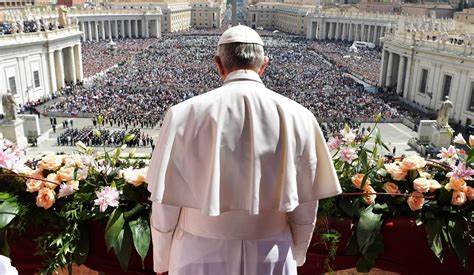The St. Malachy Prophecy: Unveiling the Secrets of the Vatican
A centuries-old manuscript concealed within the Vatican’s archives has resurfaced, predicting the succession of every pope and hinting at apocalyptic events. This is the tale of the St. Malachy Prophecy, a cryptic text that has reemerged following the passing of Pope Francis in April 2025.
Attributed to 12th-century Irish Archbishop Saint Malachy, the prophecy enumerates 112 popes, concluding with a figure known as “Peter the Roman,” whose papacy is said to precede catastrophic occurrences.
But what implications does this hold for humanity, and should we regard it with seriousness? Let’s delve into this ancient foretelling and its unsettling parallels to contemporary events.

What Is the St. Malachy Prophecy?
The St. Malachy Prophecy, also referred to as the Prophecy of the Popes, comprises 112 brief Latin phrases, each believed to describe a future pope starting from 1143.
Legend has it that during a visit to Rome in 1139, Saint Malachy experienced a vision revealing every pope until the end of time, subsequently documenting these cryptic insights.
The manuscript was allegedly lost until 1595 when Benedictine monk Arnold Wion published it.
Some proponents argue that the prophecy accurately depicted popes up to 1590, while others contend it is a forgery crafted for political motives, as its predictions become increasingly ambiguous thereafter.
The prophecy’s final entry is particularly alarming. It foretells of “Peter the Roman,” who will lead the Catholic Church during significant turmoil, culminating in the destruction of Rome and the onset of Judgment Day.

Many interpret this as a harbinger of the apocalypse, potentially in 2027, based on timelines suggested by the prophecy’s structure.
Pope Francis, who passed away at 88 due to a stroke, is considered by some to be the 112th pope in the prophecy.
The timing is striking: three leading candidates to succeed Francis—Cardinals Pietro Parolin, Péter Erdő, and Peter Turkson—bear the name Peter, fueling speculation.
The prophecy’s mention of 2027 as a potential end date adds urgency, especially amid global crises like wars and climate concerns, which some perceive as signs of the foretold turmoil.
However, experts advise caution. Scholars like papal historian Anura Guruge label the prophecy a “hoax,” noting its unknown existence for over 400 years after Saint Malachy’s death and suggesting it may have been created to influence a papal election in 1590.

The Bible also cautions against predicting Judgment Day, referencing Matthew 24:36, which states no one but God knows when it will occur.
While some phrases seem to align with past popes—such as “Gloria Olivae” (Glory of the Olive) for Pope Benedict XVI, associated with the Olivetan Benedictines—the connections often appear forced after 1590.
Critics argue it’s easy to make vague phrases fit any pope with hindsight. Nevertheless, the prophecy’s ominous warning about “Peter the Roman” and the destruction of Rome keeps it alive in popular culture, appearing in books and documentaries.
Currently, the Catholic Church is focused on selecting a new pope through a conclave, a process that could take weeks.
Whether the next pope is named Peter or not, the prophecy serves as a reminder of humanity’s fascination with predictions about the future.





